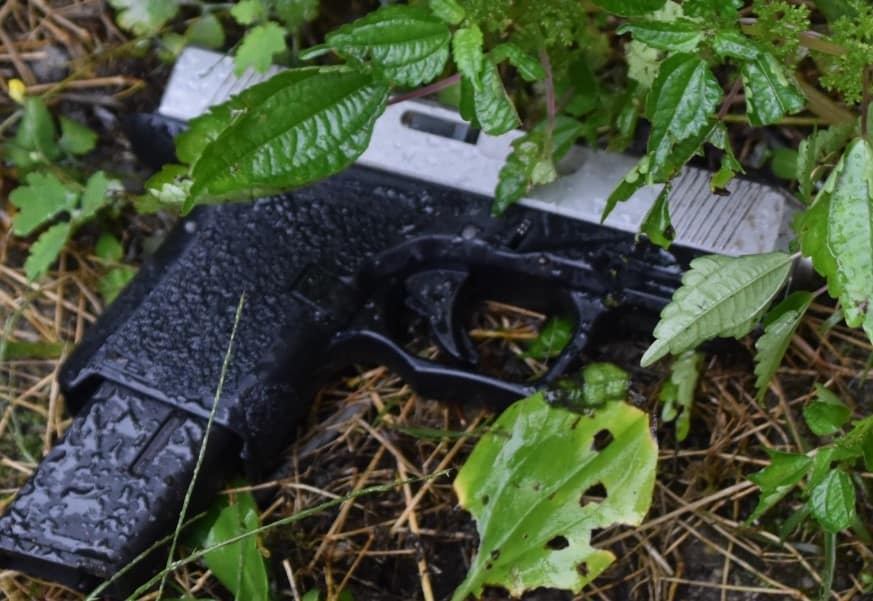Cold Weather Concealed Carry Tips and Home-Defense

The CCW game gets smaller in the summer. Your gun is likely not as large when covered with a tee or other lighter shirt, so it’ll be more concealable since there’s less material to reduce printing.
With colder weather, concealability options are completely different from what they are in the summer. It has some advantages but also some challenges to layer up for concealed carry in the winter.
If you’re not living in Florida or the Southwest, you probably need to change your wardrobe when the temperatures decrease, which allows you to add more layers than you would in the summer.
Even in the simplest of circumstances, concealed carry and home defense present a number of challenges. Carrying your weapon, selecting your holster, refining your draw stroke, and staging the weapon, there are a lot of things to consider.
What happens when the weather changes your regular defense routine? As the temperatures drop, those practices and attention to detail must shift.
We know that carrying a firearm and defending your home can be intimidating. That’s why we’ve shared some tips and tricks you can use to up your game even in extreme cold.
The Good & The Bad
You can conceal your summer gun better with the extra layers, but you can also carry a full-size gun with the added layers. If you choose outerwear that is long enough, you might even be able to carry OWB. Make sure it is long enough to cover the bottom of the holster.
Additional layers may require you to adopt new habits or re-learn old ones from last winter. Also, since you are clearing a heavier garment now, your draw will be a little different from the summer.
Though the mechanics should be the same, you may need to change the amount of material you push aside. You’ll have to practice this. If you carry a larger gun, you must learn to use new gear.
Whether you carry it at the range or in competition, carrying your full size at work is very different from carrying it at the range or in competition.
Practice, Practice & Practice
There’s a reason we start at the beginning, even though it might seem dull or redundant. The majority of gun owners who conceal carry do so without much practice.
There is rarely holster practice at the range, or they do it at low-ready at the firing line. They also typically practice at low rounds.
You need proper training and consistent practice if you’re going to own and carry a gun for self-defense. Don’t slack off on your self-defense skills.
If your ammo is in short supply or you’re financially strapped, a box of little ammo and dry fire can do a lot. Your best friend is dry fire.
Tips For Cold Weather Concealed Carry
Make sure to add additional layers to your cover garment to keep it clear. A belt-mounted holster can change your position on the belt and make the gun more accessible.
Draw
You can practice your drawing by adding layers. It is possible to do this at home, but make sure your gun is safe and empty. If you intend to shoot from a holster, find a range that allows you to draw from the holster. The majority of outdoor ranges allow them, while most indoor ranges do not.
Train
Wear gloves when you train. Keep in mind that it’s cold outside now, so bundle up and wear thick gloves if you plan to draw outside. With the added thickness, can you fire your EDC? Can your finger still fit into the trigger guard? You should check the trigger guard of a full-sized gun to see if it is large.
Wardrobe
You should also try reloading the gun with the spare mag to make sure you can grab it easily. It’s best to unzip/unbutton your jacket while carrying it for two primary reasons:
- An open jacket makes it easier to access your gun.
- Having the jacket hang loosely will reduce the amount of printing.
The jacket should be waterproof and tear resistant. Choose outerwear that can be ripped away or opened at the sides if it is ultra-cold.
Weighing Down
If you’re having trouble opening the draw-side pocket, try weighing it down. You will also need to consider the specifics of your clothing item. Keep an eye out for loose drawstrings and cut them off when you can.
Pants are the same way. There is no way to predict when an object will become jammed in the holster or caught in the trigger guard.
I’d also suggest ditching the long scarf that could impede your movement. Make sure you have a safe grip on your gun by avoiding fringes and tassels.
Tips For Home-Defense CCW In The Winter
Skip bulky, awkward layers when it’s subzero outside. Cold weather carry is a serious problem in many parts of the country.
Learn To Layer
Be streamlined while maintaining warmth by layering. For example, your handgun will be difficult to access if you’re wearing three or four layers of clothing and a long scarf featuring tassels.
Rather than wearing short sleeves with a loosely fitted fleece and a jacket, wear a long-sleeved thermal shirt. Inevitably, you will sometimes end up wearing clothes that are less than ideal. However, you can practice your drawing stroke – and holstering – in those situations.
Gloves
When the weather gets cold, gloves are also commonly worn. However, is it difficult for you to use your fingers well if you wear gloves? Is the trigger guard too bulky for them, or do you have trouble operating the trigger? How do they affect your ability to draw and grip?
Invest in thicker, warmer gloves that you can use with your gun. Sometimes you will hear someone say, don’t wear gloves. That should solve the problem, right? You’re wrong. Your fingers won’t do you any good if they are freezing and stiff. To find the right gloves, all it takes is a little effort.
Footwear
You may not realize how important what goes on your feet is. Flip-flops, just as they can ruin your life in summer during an assault, can do the same in winter.
Choose shoes or boots that will help you remain upright in case of an attack. Those shoes absolutely will not work if someone is hell-bent on injuring you. If you can’t walk normally without extreme care in your current shoes, they won’t help much.
Home-Defense
The cold weather has nothing to do with home defense, right? Wrong. You would be surprised at how much there is to do. The addition of holiday decorations alters the layout of your home.
Become familiar with your new floor plan by maneuvering around it in daylight and dark. Despite the fact that the goal of home defense is to protect you and your family inside the home, you can also improve the outside to support your overall plan.
Snow and ice should not accumulate on the porch, driveway, or walkway. Make sure they’re passable by adding salt or sand to the paths.
Final Words
It may not make you perfect, but practice will make you better prepared, just like in all your training. Trying to learn self-defense in a fight is the worst place to do so, as the old sage of the firearm advises.
Prepare yourself. Winter is approaching. And that is all the tips I can give you for concealed carry and home defense in winter.

